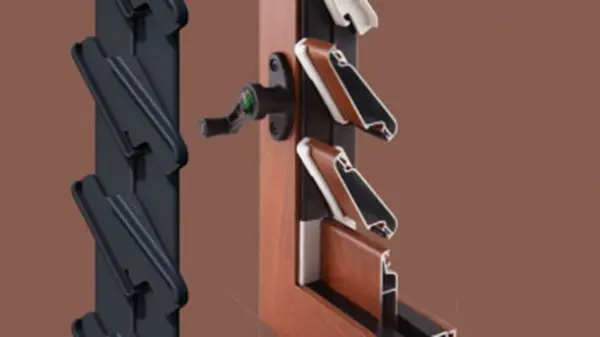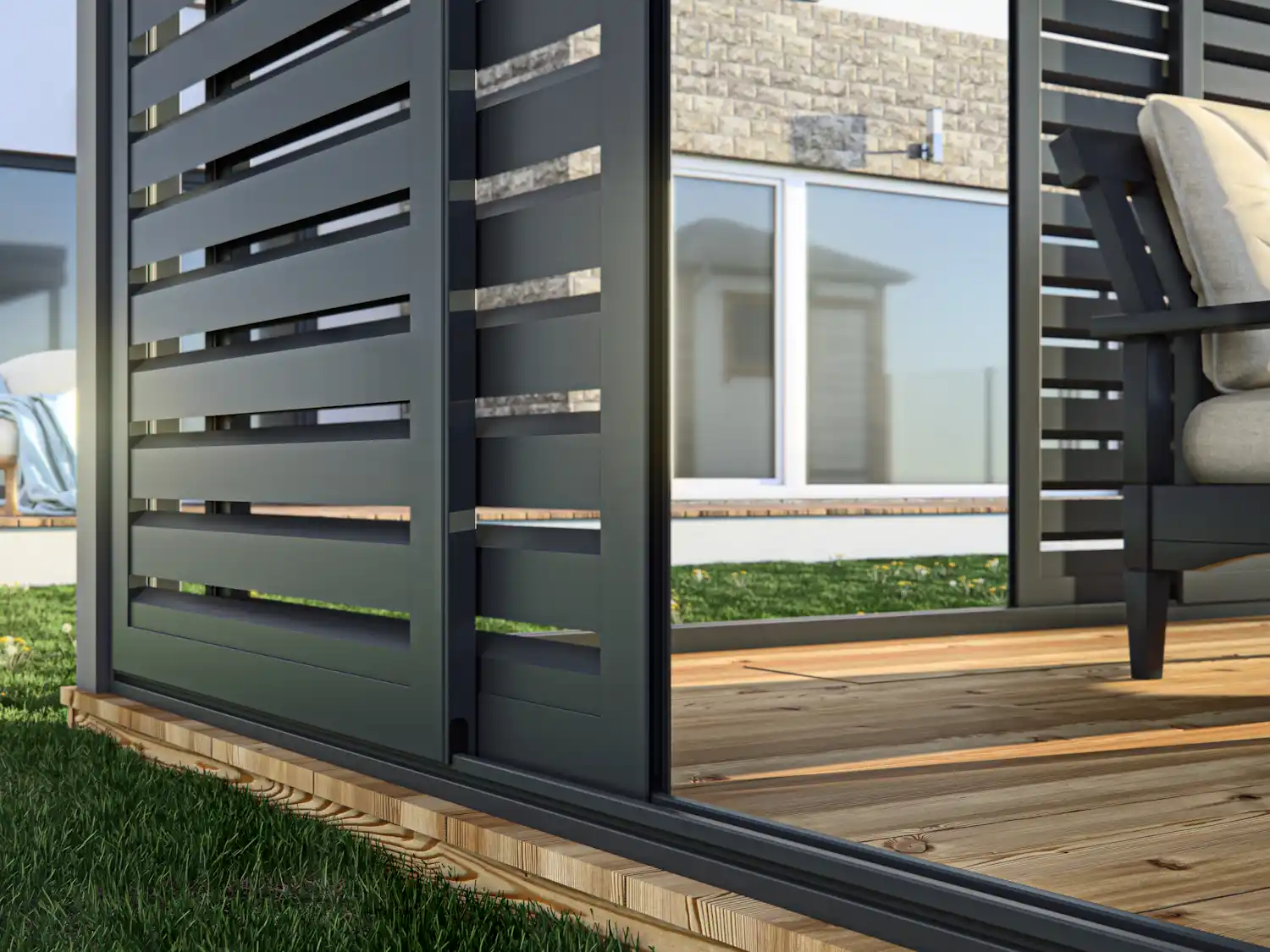Aluminium in architecture
Architecture is usually defined through the construction and design of buildings, but in a deeper sense, it represents science and the art of space design using volume, as well as a unique design of the practical use of space for the purpose of achieving an improved and more effective lifestyle, as well as the protection from natural disasters and enhanced integration of the building into the environment.
There are numerous variables which are considered when designing a building, such as material properties, surface treatment, colour, as well as the relation and arrangement of full and empty surfaces and of open and closed space. Architecture has managed to successfully integrate the fourth dimension, which is time, into its apparently three-dimensional world.
Time as an additional architectural element integrates the overall impression of the building, going beyond its fundamental relation to space.
Architecture achieves a complete synergy of quality and aesthetics through the fitting of a building into the space and time. In this way, it implements the functionality of all the elements and aspects of the building for human habitation and the man’s coexistence with the environment. In the modern age of architecture, a new trend of aluminium shutters implementation fits into this synergy.
Aluminium as a strong, light, flexible and eco-friendly, yet hard, durable and resistant material, has contributed to architecture and the possibility of creating shapes that traditional construction material, such as brick or wood, could not achieve.At the beginning of the 20th century, aluminium in architecture, as well as aluminium joinery, started a modern architecture revolution.
The history of use of aluminium in architecture
Until 200 years ago, mankind did not know aluminium existed. Although it was discovered and explored only recently, due to its excellent properties, strength and versatility of use, this material quickly gained popularity and revolutionised architecture, construction and many other industries.
The research of aluminum processing has contributed to the production various alloys that dominated the architecture of the early 1920s, and owing to the development of advanced production techniques, the high initial aluminium processing costs, which were higher than gold processing ones, were reduced by as much as 80%.

Aluminium in architecture and construction has thus experienced a rapid and wide growth in its application as the ultimate solution for doors, windows, sliding walls, roofs, curtains, blinds, formwork, fences, as well as other joinery and construction elements. In art and architecture, aluminium is often associated with the „Art Deco“ movement.
The increase in the use of aluminium is still continuing, expanding its application in the 21st century through the forming of modern aluminium alloys which can support great weight, so in case of having heavy glass walls they bring more sunlight into the buildings and skyscrapers. Aluminium in architecture has facilitated the building of higher buildings with an improved energy efficiency and reduced CO2 emissions.
The applications of aluminium in architecture
Aluminium was an essential element in the building of the „Empire State Buildinga“, completed in 1931, that remained the highest building in the world until 1970. Its structure, the main elements, the lobby and the interior were constructed predominantly using aluminium. The next great example of the synthesis of architecture and aluminium is the building of the Aluminaire House, the first all-metal house in the United States, designed by Lawrence Kocher and Albert Frey. Light aluminium alloys were also applied in the building of the “Dymaxion House” by Buckminster Fullera, relying on high alloy strength to weight ratios.
Aluminium alloys then became widely popular for their low weight, flexibility and environmental performance.
The weight to strength ratio provided by alloys resulted in the increased building of skyscrapers, and the resistance to fire, corrosion and impacts of such material have made them essential construction elements. The elegant appearance of the material can contribute significantly to the aluminium joinery development, as well as the interior and exterior design in architecture through the application of different metallic shines and colours which can be applied to aluminium in architecture.
Aluminium can be polished, moulded and shaped into forms of different width and thickness, without it losing its outstanding properties, such as weather resistance, thus representing a long-term and easy-to-maintain construction solution. One of the aluminium applications for design purposes is the aluminium sheet, available in different colours, grain sizes, thicknesses, patterns, grades and engravings. Its applications and possibilities are diverse and versatile.

Aluminium and “green buildings”
Environmentally-friendly and sustainable solutions are increasingly focusing on the so-called “green building”. Since aluminium is one of the most energy-efficient and sustainable materials, it is not surprising that it plays a significant role in this modern environmentally-friendly construction.
Aluminium remains stable and is applied in the most severe climatic conditions with temperatures ranging from –80° C to +300° C, not causing its exceptional insulation properties to deteriorate, but, on the contrary, meeting all the low-energy building requirements.
However, probably the most important property in terms of green building is aluminium recyclability without loosing its original characteristics and the general quality. In some cases, the existing aluminium can be recycled up to 100%, with up to 90% less energy consumed compared to new aluminium production.
Working with aluminium is more simple compared to other materials, with end products and buildings being less heavy. The entire logistics of this material is much simplified, as well, due to its reduced weight.
Modern alloys achieve lower greenhouse gas emission rates, require less water and energy consumption and produce less construction waste. These very properties of aluminium in architecture are the key green and sustainable building elements.
Aluminium joinery in architecture
Aluminium has paved the way for a new and modern lightweight construction age. It was originally used as an essential material in joinery production within the construction industry. It revolutionised the production of large-size windows and openings, which was impossible to achieve using materials, such as wood and PVC.
A simple processing and shaping of aluminium also allows for the production of circular and semi-circular windows, as well as other demanding joinery elements. The possibility of painting them using a variety of colours and creating specific surface textures has contributed to providing new design solutions in residential, commercial and office buildings.

However, there used to be a problem with the thermal conductivity of aluminium. Research has revealed a thermal break in a polyamide strip up to 0.9” (2.4 cm) wide which has achieved improved insulation properties without the transmission of hot and cold air, thus preventing the occurrence of condensation.
In this way, the scope of application of aluminium in architecture and joinery is additionally extended, representing today the most luxurious form of joinery that can be used.
With the application of aluminium and its thin and elegant profiles of different colours and shapes, shutters have become an essential and aesthetically appealing addition to every building, providing thermal and acoustic insulation, as well as the protection against UV radiation and climatic conditions. Aluminium shutters present the best long-term investment with minimal maintenance costs. Different aluminium shutter models and solutions meet the modern and traditional architectural requirements, finding their application in the restoration of old buildings owing to their elegance and flexibility..
Conclusion on aluminium in architecture
Aluminium properties, such as its durability, strength, flexibility and resistance have made it one of the most popular and demanded materials. Therefore, it is not surprising that the increase in its demand is growing each year since it was discovered, particularly through innovative alloys allowing for a cheaper production. It finds its application in a variety of industries, including the pharmaceutical and food industries, as well as automotive industry, and being a major feature in architecture, construction and joinery.
Aluminium joinery has become one of the best 20th century discoveries in the construction of residential and commercial buildings. It affects each aspect of the quality of life and living in a building on a daily basis, increasing its energy efficiency and convenience, while reducing costs, thus presenting a unique solution for an environmentally sustainable construction.
Aluminium profiles have become the basic element f aluminium joinery and aluminium shutters. For this very reason, EUX has chosen aluminium, integrating all of its positive properties and possibilities in order to create unique high-quality shutter systems, mechanisms and accessories providing a solution to all the building types. Aluminium profiles have become the basis giving rise to a new and modern age of aluminium in civil engineering, adding new elements later on, such as aluminium shutters.






































